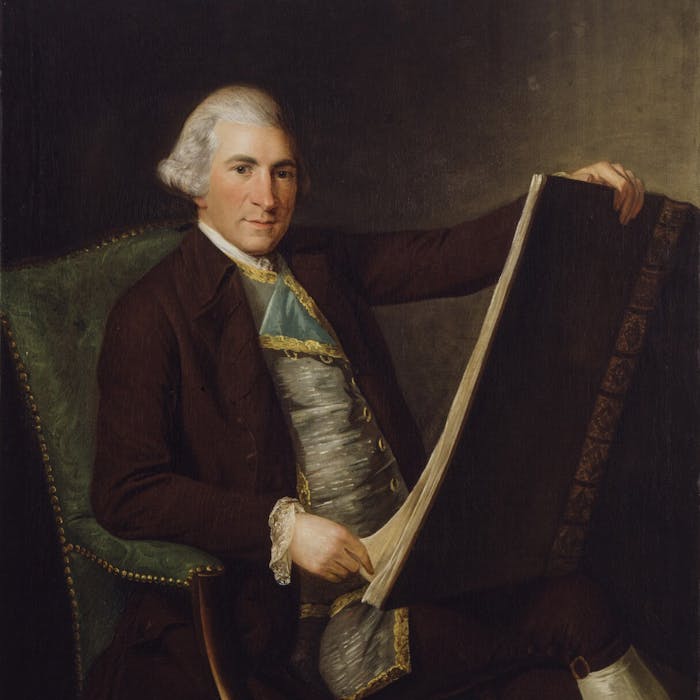
Robert Adam - prolific neoclassical Scottish architect
Robert Adam was a Scottish architect, interior designer and furniture designer. Born in 1728, he was the son of William Adam, Scotland's foremost architect of the time, and trained under him. Robert became synonymous with the style of building called Neoclassical – a movement in the decorative and visual arts that drew inspiration from the 'classical' art and culture of Ancient Greece and Rome.
Born in Kirkcaldy, Adam was studying at Edinburgh University at the time of the Jacobite Uprising in 1745-6, but had to withdraw after serious illness, and became assistant to his father's practice. In 1754, he departed Scotland to join Charles Hope, younger brother of the Earl of Hopetoun, on the Grand Tour, on which he studied classical architecture and explored Greek and Roman remains. Upon his return he set up an independent practice in London, and then worked with his father.
Becoming an MP for Kinross-shire in 1768, four years later he and his father were nearly bankrupted by a banking crisis whilst building The Adelphi in London. This badly tarnished their reputation - worsened a year later when they again speculated unsuccessfully in a group of stuccoed terraces in Portland Place, London.
However, the Adams did build three major London houses in the 1770s, which were strong examples of their mature style — Wynn House in St. James’s Square; No. 20, Portman Square, for the countess of Home (also the original site of the Courtauld Institute of Art); and Derby House in Grosvenor Square for the 12th earl of Derby.
In the 1780s, Adam designed and built a number of romantic neo-Gothic castles in Scotland. The most important of these is Culzean (1777–92), Ayrshire, for the earls of Cassilis. Another neo-Gothic work is the interior of Alnwick Castle, Northumberland.
James and Robert Adam worked on the prestigious plans for Edinburgh New Town, the redevelopment of the central area of the Scottish capital, built in stages between 1767 and around 1850, and a UNESCO World Heritage Site.. Robert Adam designed Charlotte Square in 1791, regarded as an architectural masterpiece. He was also the architect of Syon House in London, Culzean Castle on the Firth of Clyde, Kedleston Hall in Derbyshire, Pulteney Bridge in Bath and Harewood House in Yorkshire.
Adam is regarded as a leader of the first phase of the 'classical revival' in England and Scotland from around 1760 until his death in 1792. He influenced the wider development of Western architecture, both in Europe and in North America.
Further reading
Links to external websites are not maintained by Bite Sized Britain. They are provided to give users access to additional information. Bite Sized Britain is not responsible for the content of these external websites.
